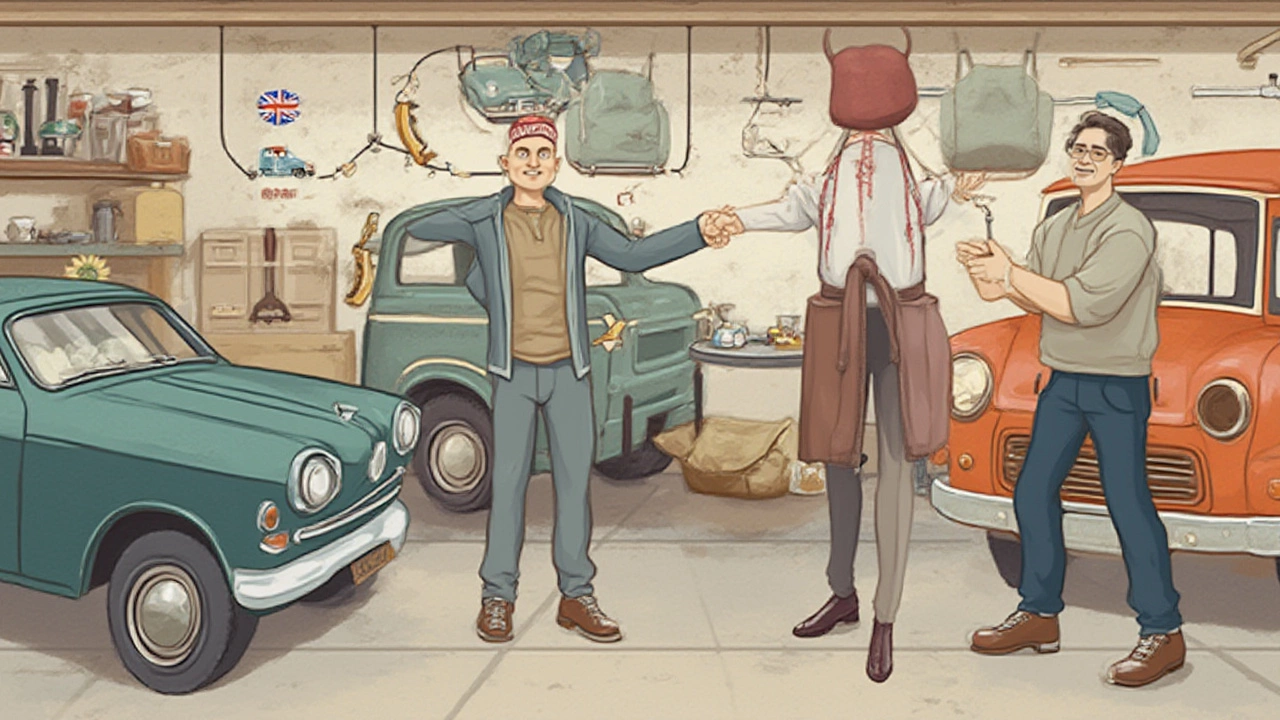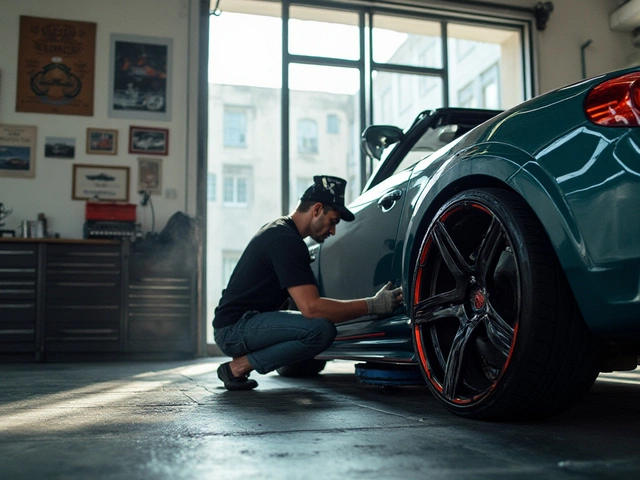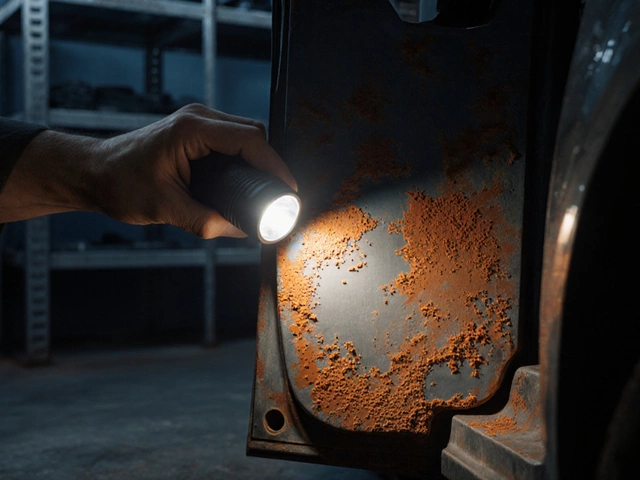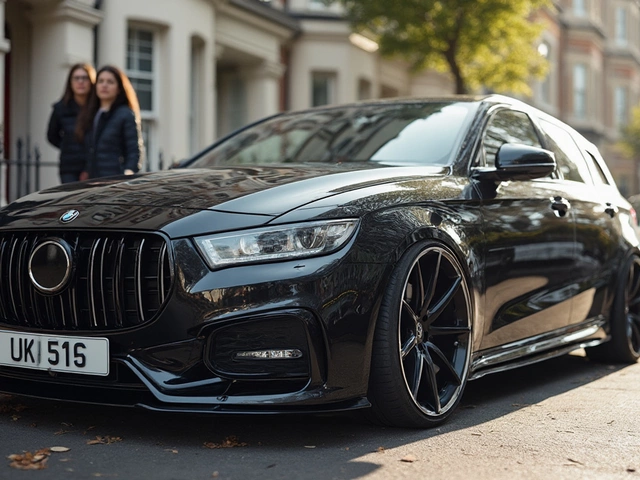Think about sliding into your car and feeling the cool, smooth comfort of real leather under your fingertips. Katzkin is one of those brands that promises to take your vehicle’s interior from stock to show-stopper, wrapping your seats in what looks like luxury. But here’s the million-dollar question: when Katzkin says ‘leather’, is it really 100% the real deal, or is there something more going on under the surface? Car owners everywhere are swapping tired fabrics for Katzkin kits, but not everyone knows exactly what’s happening underneath those eye-pleasing covers. There’s been buzz, confusion, even heated debates on forums about how ‘real’ Katzkin actually is—and what that means for comfort, durability, and resale value.
What is Katzkin? Decoding the Materials Under Your Seat
Everyone loves the idea of a luxurious custom leather seat, but let’s be brutally honest: not all automotive leather is created equal. Katzkin has built a reputation as a go-to for anyone wanting a high-end upgrade that looks (and often feels) better than what most manufacturers put in at the factory. So, what do you actually get with Katzkin? Unlike the generic “leatherette” covers you see on cheap online listings, Katzkin operates mostly in a different ballpark. Their promise centers on using real automotive-grade leather, but the details matter.
Here’s the reality: when you order a Katzkin kit, the part of the seat that makes contact with your body—the “seating surface”—is genuine leather. Katzkin typically sources its hides from North American cattle, and most of their leathers conform to the standards you’d find in high-end car brands. But there’s a twist. The side panels, seat backs, and some trim pieces aren’t pure leather. Instead, these areas use a carefully matched vinyl that looks and feels nearly identical to the leather. Why? It's all about durability, cost, and weight. Vinyl holds up better on pieces that face more stretching and wear, and it lets Katzkin keep prices lower without compromising the part you touch most.
Let’s look at the specifics. Katzkin’s automotive-grade leather is tanned and treated the same way as OEM car leather. The company mentions their leather passes stringent tests for color fastness, abrasion resistance, and even UV exposure—a major factor if you park in sunny climates. Here’s where things get interesting: certain custom patterns or premium styles may use higher grades or thicker cuts of leather for the face. But the pattern never changes: real leather on the seating surfaces, with matching synthetic vinyl on the rest. This is exactly what most “factory leather” interiors do too—even luxury brands like BMW and Mercedes use this combination, sometimes with much more vinyl than consumers realize.
| Area | Katzkin Material |
|---|---|
| Seating Surface (where you sit/touch) | Genuine Automotive Leather |
| Seat sides/backs/panels | Automotive-Grade Vinyl |
| Stitching/Trim | Heavy Duty Polyester Thread |
Is this bad? Not really. The vinyl Katzkin uses is color-matched and grained to look nearly identical next to the leather. Most passengers won’t notice the transition unless they really dig in, so your interior still looks seamless and feels upscale. You basically get the same hybrid build as original manufacturer ‘leather’ interiors—if anything, Katzkin often uses softer top-grain hides than some OEMs. For anyone thinking about trading up, keep this combo in mind when comparing Katzkin to real full-leather interiors found in rare exotics—which can be two or three times the price.

How Katzkin Leather Compares to Factory Leather Seats
Maybe you’ve heard people argue that “aftermarket never looks like factory.” But with Katzkin, that just doesn’t hold water—unless you happen to work on design teams in Detroit. First, let's bust a big myth: almost no brand, even upmarket automakers, offers car interiors with 100% leather everywhere. Flip up your seat on most showroom models and you’ll spot plenty of vinyl hidden out of view. Katzkin’s formula nearly mirrors the modern factory blend: prime hides on contact points, tough vinyl on the rest. That’s not cutting corners; it’s pretty much accepted industry practice.
Here's what gives Katzkin an edge for car owners looking to upgrade:
- Katzkin: This company uses high-quality, top-grain leather for the seat surfaces, which means you get the hide’s outermost and most durable layer. The color options? Wildly customizable. From race-ready reds to rugged desert hues to factory-look blacks, the palette is miles deeper than most new-car order sheets.
- OEM Seats: Most automakers—think Toyota, Ford, Honda—use “leather-trimmed” approaches in their midrange and luxury cars. That means just the seat cushion and backrest get leather; everything else is well-matched vinyl. The advantage: easier repairs, lighter weight, and lower cost. Some luxury cars (Lexus, Lincoln) go thicker or offer “semi-aniline” leather, but these are the exception, not the rule.
- Special Editions & Trims: Ultra-premium brands will sometimes go all-in with 100% full-grain leather everywhere, but these interiors are pricey and rarer than a clean, rust-free ‘97 Civic in Minnesota.
How does the Katzkin combo hold up under actual use? Some real-world observations help clear the air:
- Katzkin’s materials undergo over 100,000 rub cycles during testing (essentially simulating years of butt-in-seat action). If you’re rough on your car or haul active kids and pets, Katzkin’s build quality can match or outlast factory covers.
- Independent installers see far fewer warranty issues with Katzkin kits than with generic seat covers or “leatherette” stuff. The seams don’t rip, the color doesn’t flake, and surface cracking tends to show up much later—especially if you condition the hides.
- Swapping old cloth for Katzkin often adds perceived resale value, especially when dealers prep a trade-in to “feel” more luxurious. Some used car dealerships even market cars as “Katzkin Leather,” knowing the upgrade makes an impression.
That said, there are some trade-offs. Vinyl isn’t as breathable as natural leather, so extreme summers can make non-seat surfaces feel less forgiving if you leave the windows up. Cleaning is pretty easy though, and the synthetic parts don’t dry and crack like cheap imitation leathers do. For people allergic to animal products or focused on sustainability, Katzkin’s real-leather face won’t check all the boxes—you’ll want to ask them directly about their „Eco” options or look into full vegan covers.

Tips for Choosing and Caring for Katzkin Upholstery
If you’re window-shopping for a Katzkin kit, it helps to know your priorities. Is it about the look? The feel? Long-term durability? Don’t stop at picking a color—give some thought to the finish (matte or shiny?), perforation for breathability, and even the accent stitching. Katzkin offers custom embroidery and two-tone builds that’ll make your ride stand out in a crowded parking lot, so there’s room to get creative.
Budget-conscious folks sometimes try blends with the company’s Factory Match line, which aims to recreate OEM vibes while sticking with the same part-leather, part-vinyl approach. Chat with your installer—good ones have sample swatches so you can compare leather grain and thickness in person. Some will even show you the difference between their premium and ‘factory style’ lines. Don’t just go by pictures on a website; real samples are worth their weight in gold so you can check tactile feel, thickness, and scent, too.
| Caring for Your Katzkin Leather | How Often? |
|---|---|
| Vacuum crumbs and debris | Weekly |
| Wipe with damp cloth | Every 2-3 weeks |
| Use approved leather cleaner/conditioner | Every 3 months |
| Spot treat stains quickly | As needed |
| Keep out of prolonged direct sunlight | Whenever possible |
For the best results, treat your new covers right from the start. Dust and dirt act like sandpaper on leather—so vacuum often and gently brush debris from the seams. Clean spills immediately; the leather is coated and relatively stain-resistant, but sugary drinks and coffee can seep in quickly. Use a conditioner made specifically for automotive hides (not home sofa cream!) about every three months. This stops the leather from drying and showing wear patterns where you slide in and out. Avoid harsh soaps, abrasive brushes, or wax-based polishes on the vinyl—these products can create streaks or break down the synthetic grain over time.
Another practical tip: in extreme climates (think Arizona summers or northern winters), parking in shade or using sun shades and seat covers can add years to your interior’s good looks. Vinyl can shrink and get brittle under baking sun—this isn’t just a Katzkin issue but common to any car interior material. Seat heaters and coolers work just fine with Katzkin covers, but ask your installer to double-check if you’re running aftermarket systems or want to keep OEM sensors functional.
If you’re committed to long-term clean looks, set a calendar reminder to treat the leather two or three times a year and keep some gentle wipes in the glovebox. This small habit is the difference between seats that age with style and ones that look faded long before you’re ready to trade in. And if you score a stain you can’t tackle, most pro detailers know Katzkin’s material and can get rid of almost anything without ruining the finish.






